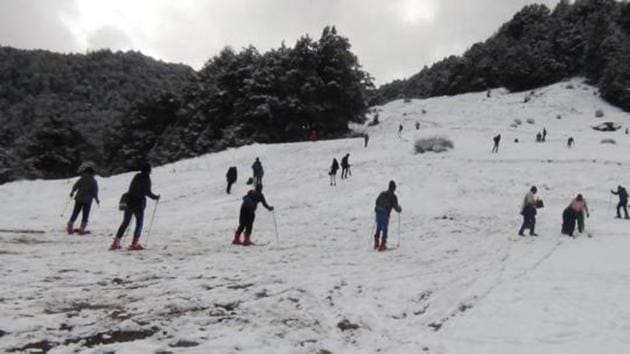Uttarakhand govt to challenge high court order on bugyal restrictions
The Uttarakhand high court had ordered removal of permanent structures at high-altitude meadows, banned night stays, and limited the number of tourists visiting the meadows to 200. The government said such steps would give a blow to tourism.
The Uttarakhand government will challenge the high court order on removal of permanent structures at high-altitude meadows, banning night stays, and limiting the number of tourists visiting the meadows to 200 as these would prove to be a “massive blow” for tourism.

“The government will have to seek support from the Supreme Court because the order is a major blow to the state’s tourism sector,” department’s secretary Dilip Jawalkar said.
Uttarakhand is replete with tourist spots with trekking and skiing, at Auli for example, being popular attractions among people from other states. The government has been busy promoting Auli as a winter destination for the tourists, and its measures have succeeded in generating nearly ₹4 crore of revenue annually. Besides Auli, Roopkund and Dayara Bugyal are other popular spots.
But the high court order’s immediate effect will be felt by the people waiting to throng the Nanda Devi Raj Jat Yatra, which the tourism department official described as ”a historic and traditional fair” scheduled to begin on September 14-15.
Thousands of devotees attend the fair, travelling on foot for nearly 300 km. During the journey, which covers Almora, Pithoragarh and Chamoli districts, they stay in temporary structures lining the meadows.
The Wildlife Institute of India (WII), however, believes the court order could have been avoided had the state taken its 2004 study covering the ecological expedition across the alpine region “seriously”.
Titled ‘Alpine meadows of Uttaranchal: ecology, landuse, and status of medicinal & aromatic plants’, the study had suggested conducting a proper environmental impact assessment of all popular meadows, commonly known as bugyals.
‘Easily accessible and popular bugyals are vulnerable to demands of development such as creation of ski resorts, construction of roads, tourism complex and other structures. Proper environmental impact assessment will have to be done and appropriate mitigation plans need to be made before such developmental projects are cleared,’ the report had stated.
The study, which covered 82 bugyals in Uttarakhand, also suggested taking up coordinated efforts towards conservation and management of bugyals with the help of ‘van panchayats’ (village forest councils) and the locals.
Furthermore, establishment of medicinal plant conservation areas was suggested. Fourteen sites were identified and termed ‘botanical hotspots — rich in medicinal plants’. It was recommended to declare these sites as Medical Plant Conservation Areas or Bugyal Preservation Plots.
Twenty five mammal species, including Himalayan tahr, Himalayan musk deer, Himalayan blue sheep or bharal, goral, yellow-throated marten, red fox, Tibetan woolly rhino, pika, and vole, were sighted, some being endangered.
“The suggestions put forward in the report should have been complied with. The local tourism entity should take full responsibility of upkeep and management of bugyals. Management of waste in high altitude areas should be strategically handled and locals should be involved in conservation,” GS Rawat, WII dean who authored the report, said.






